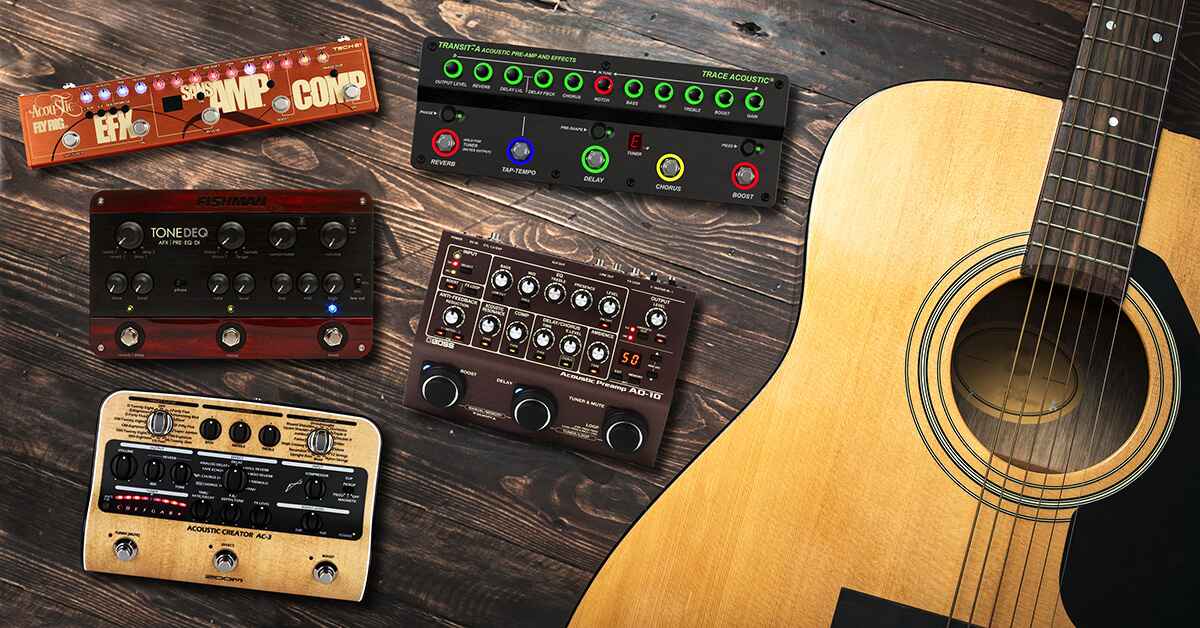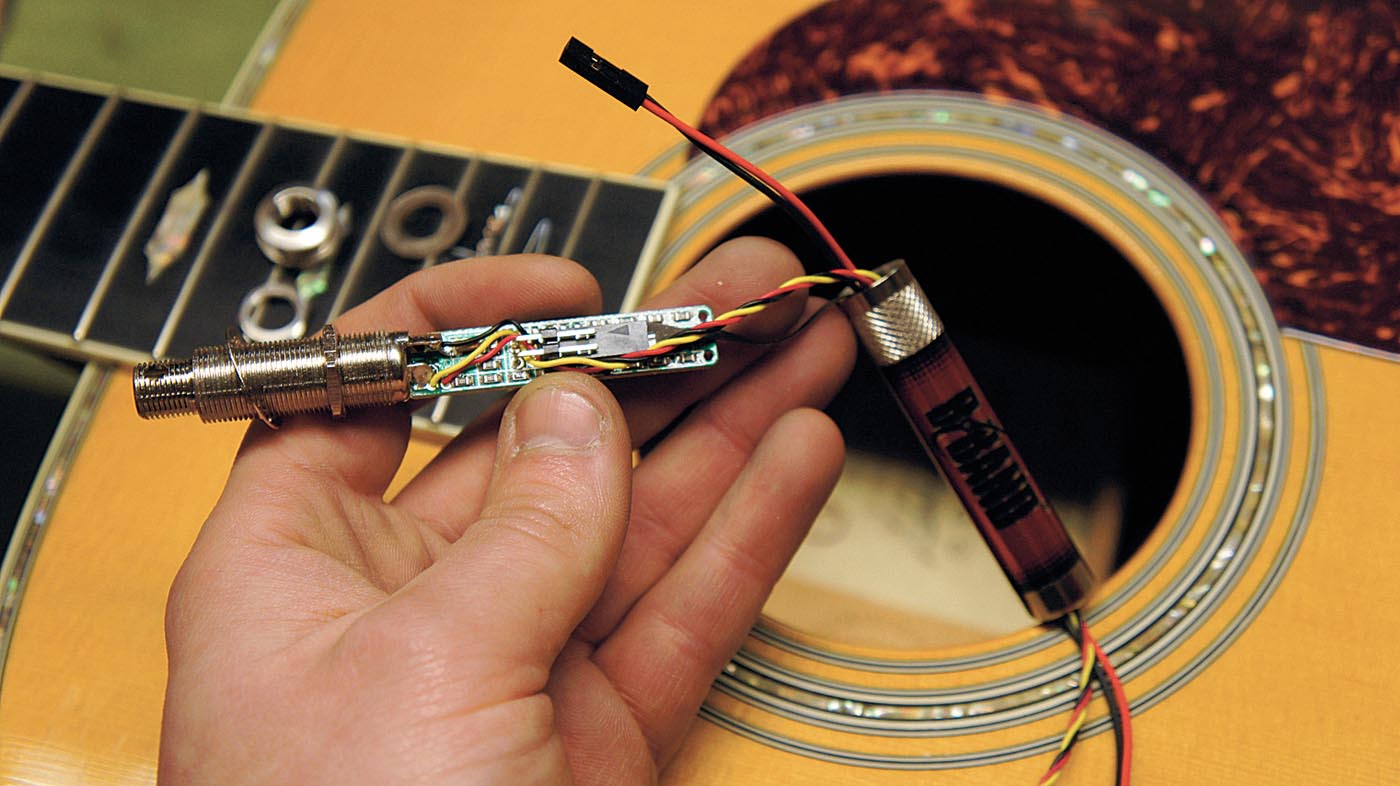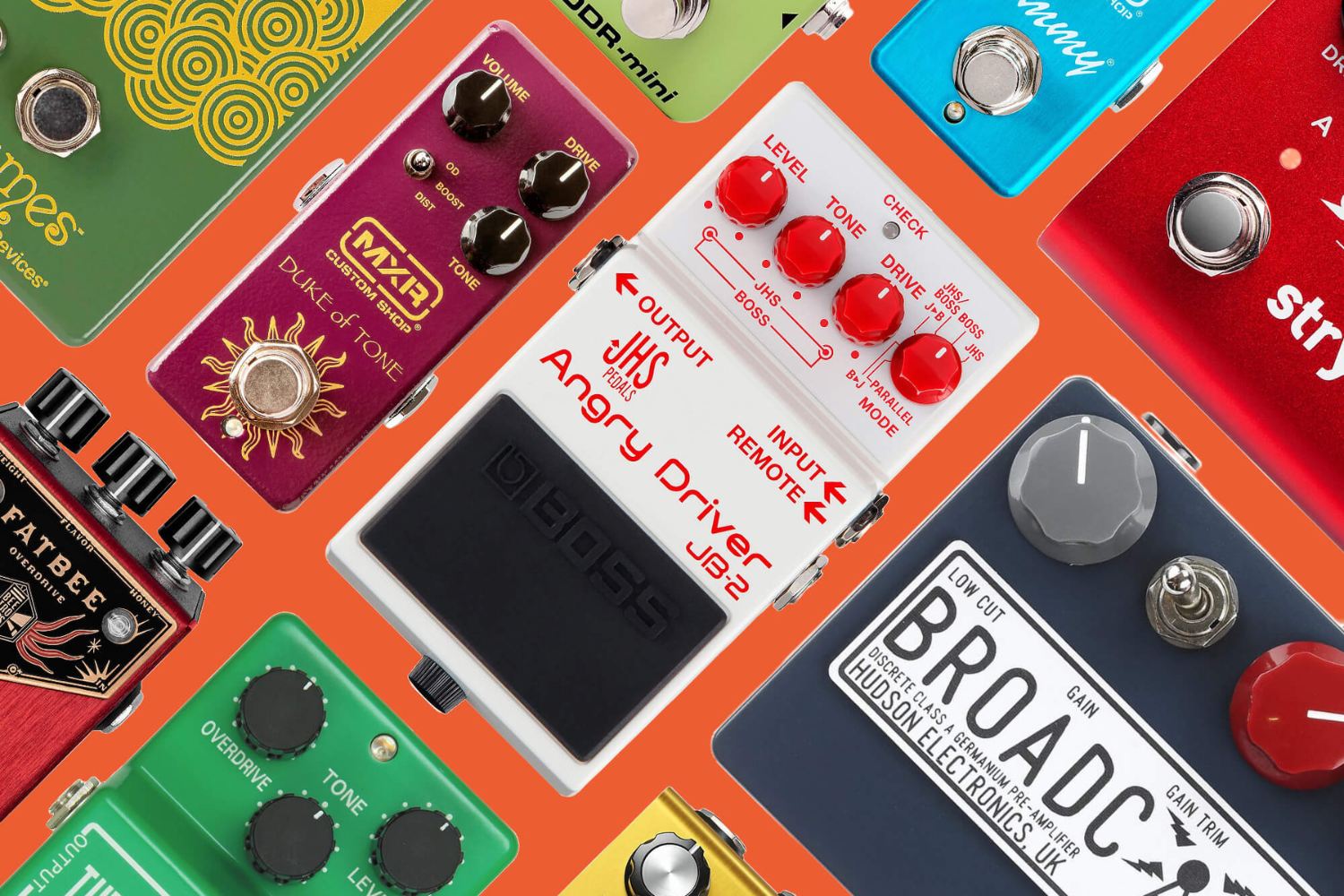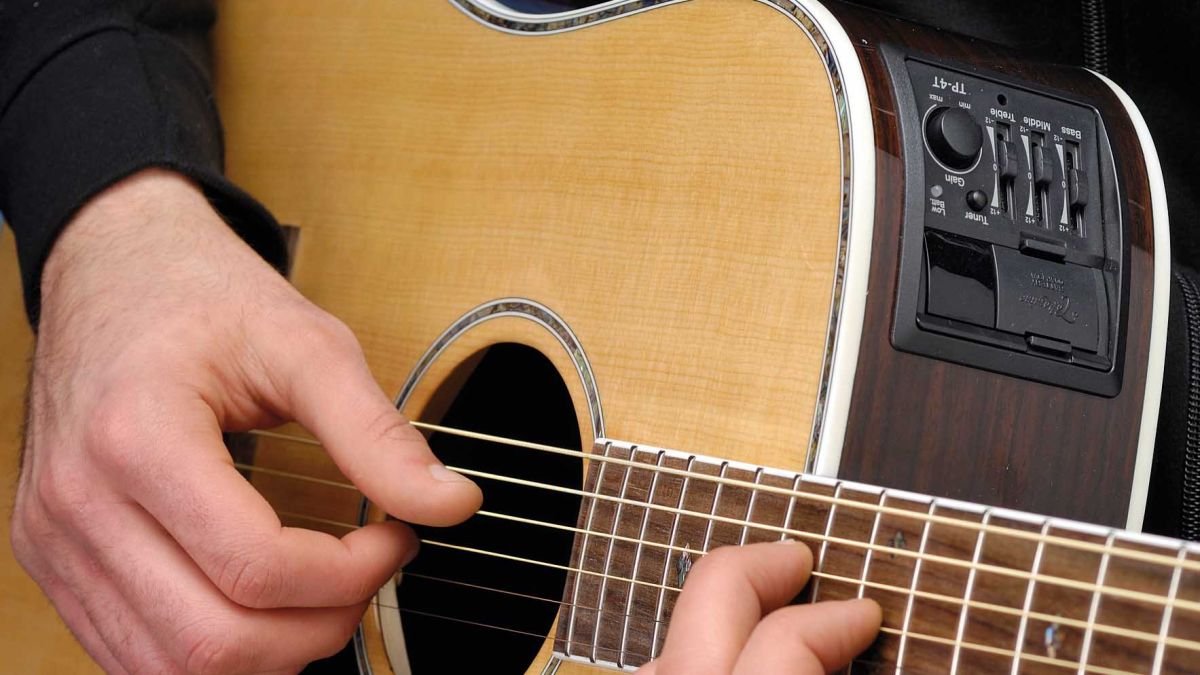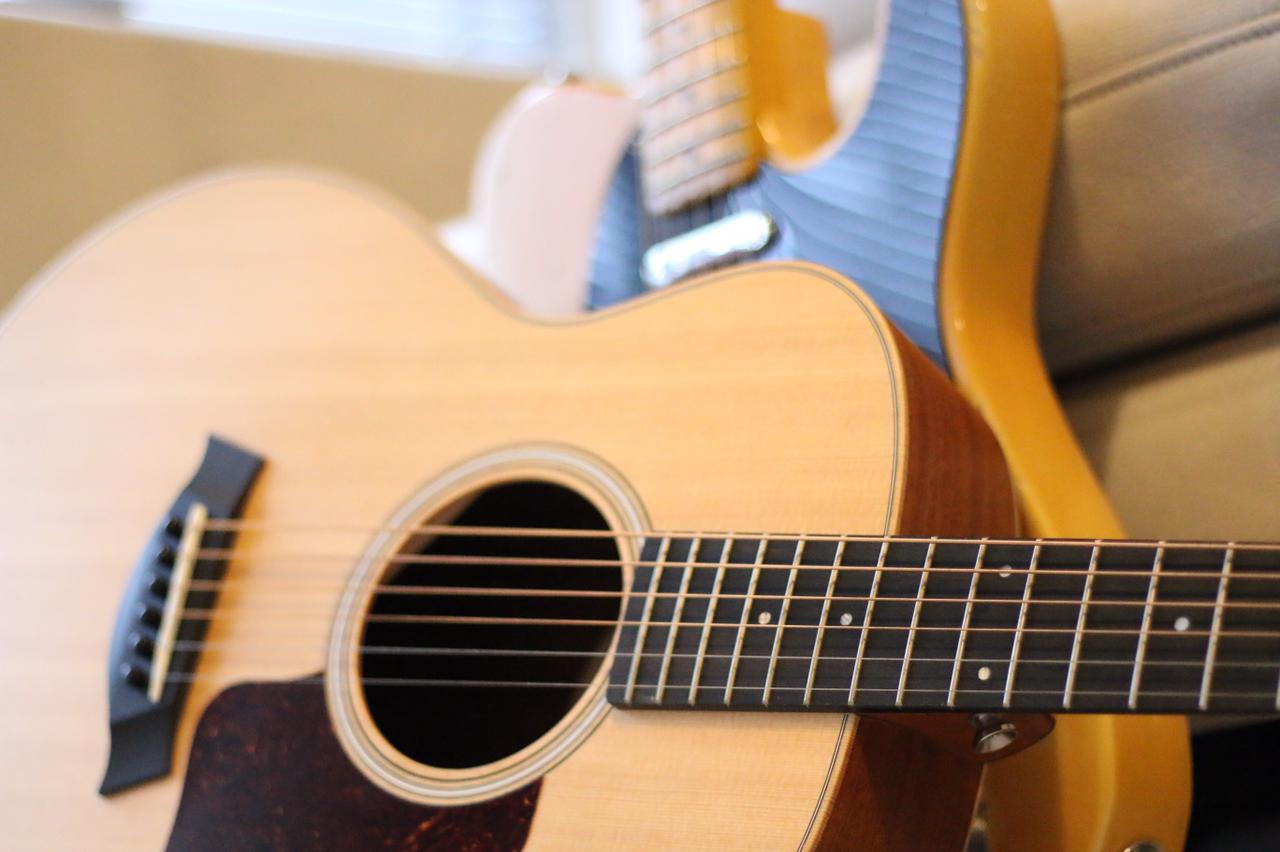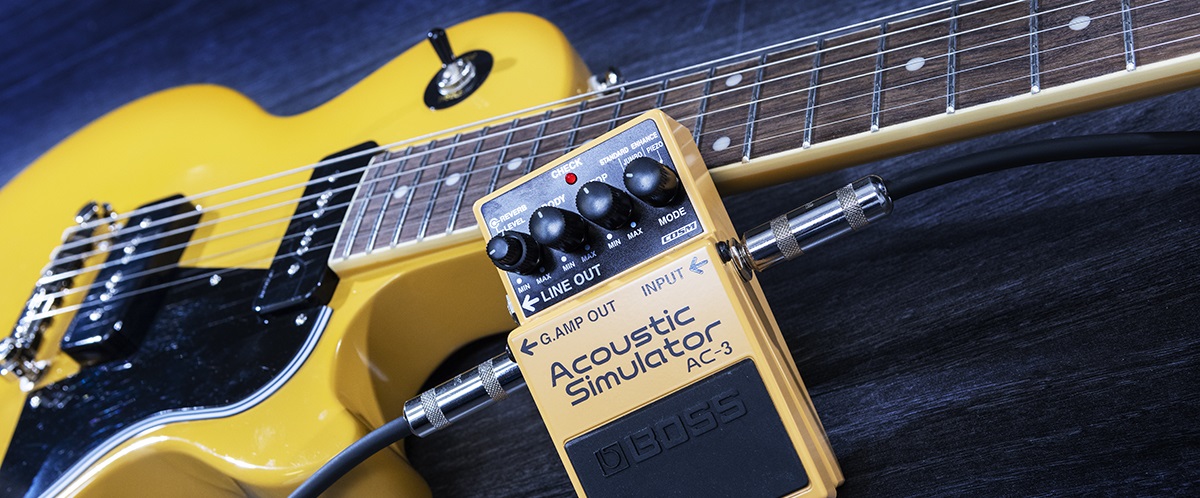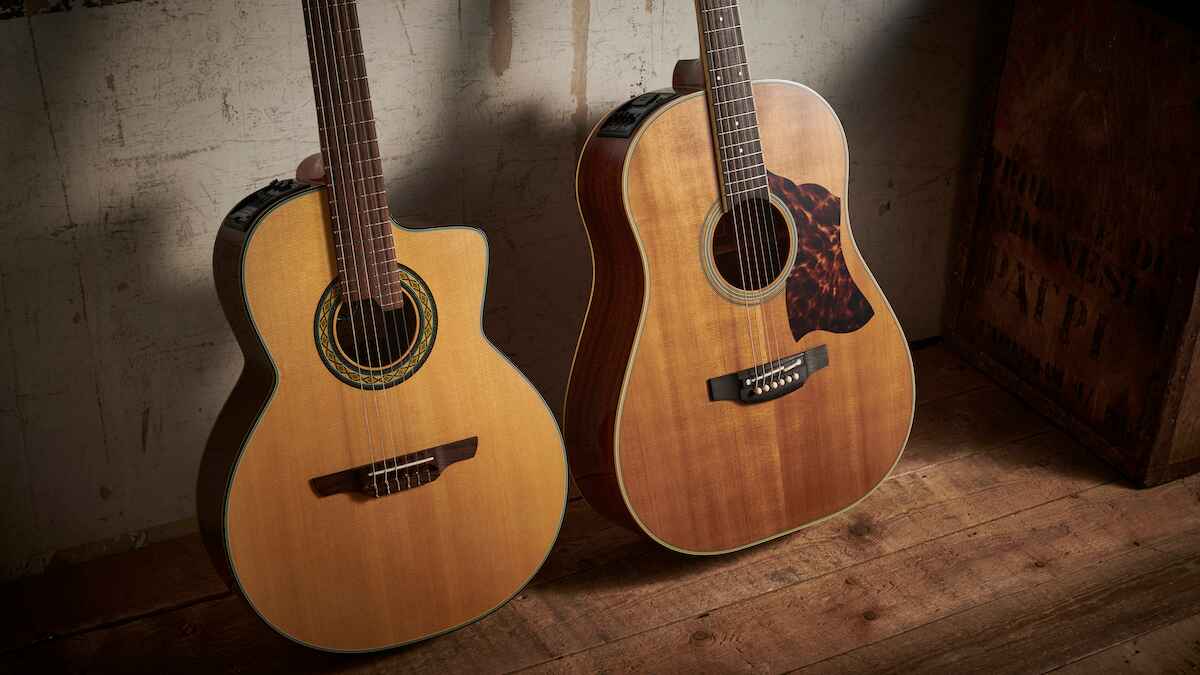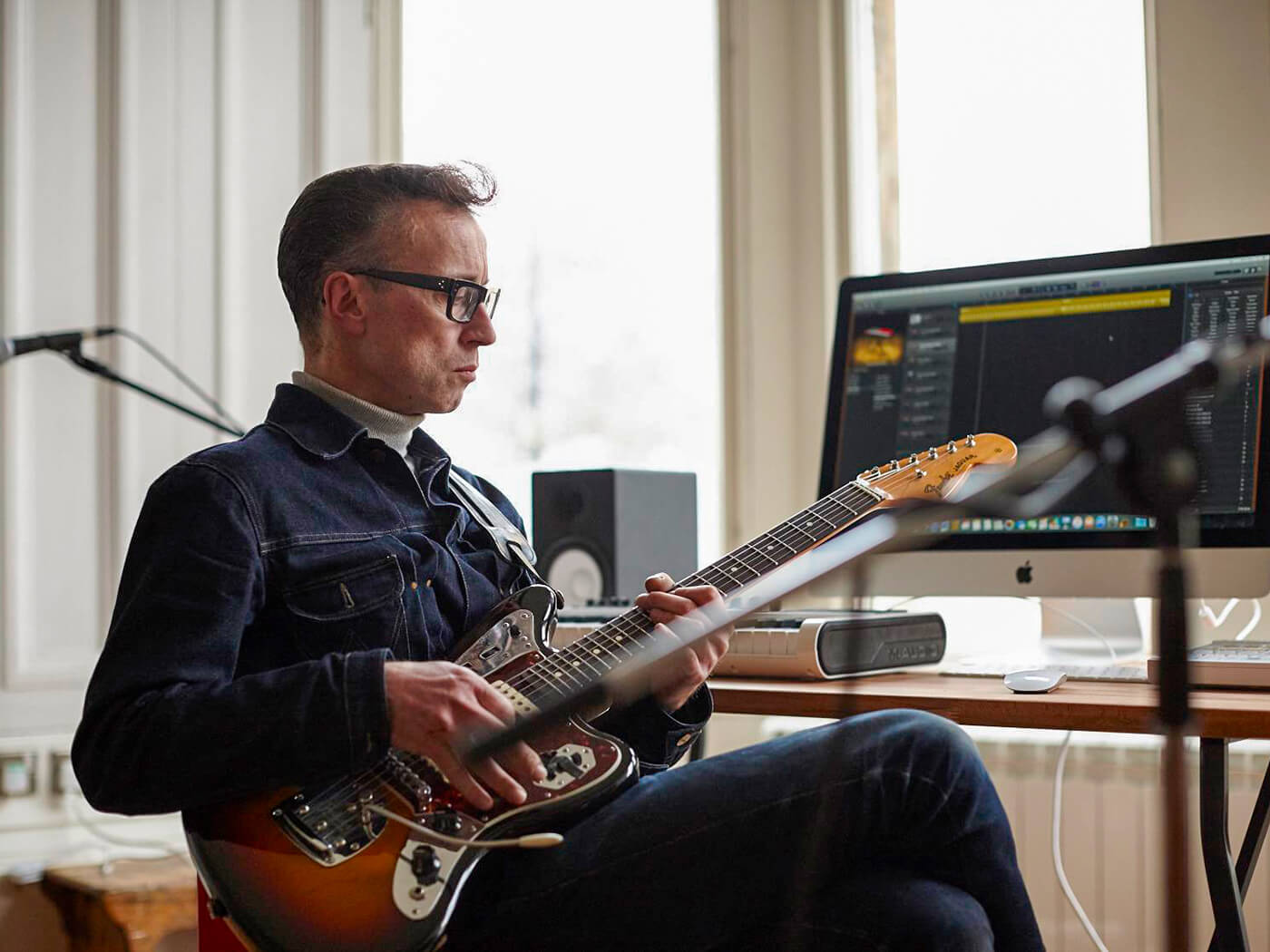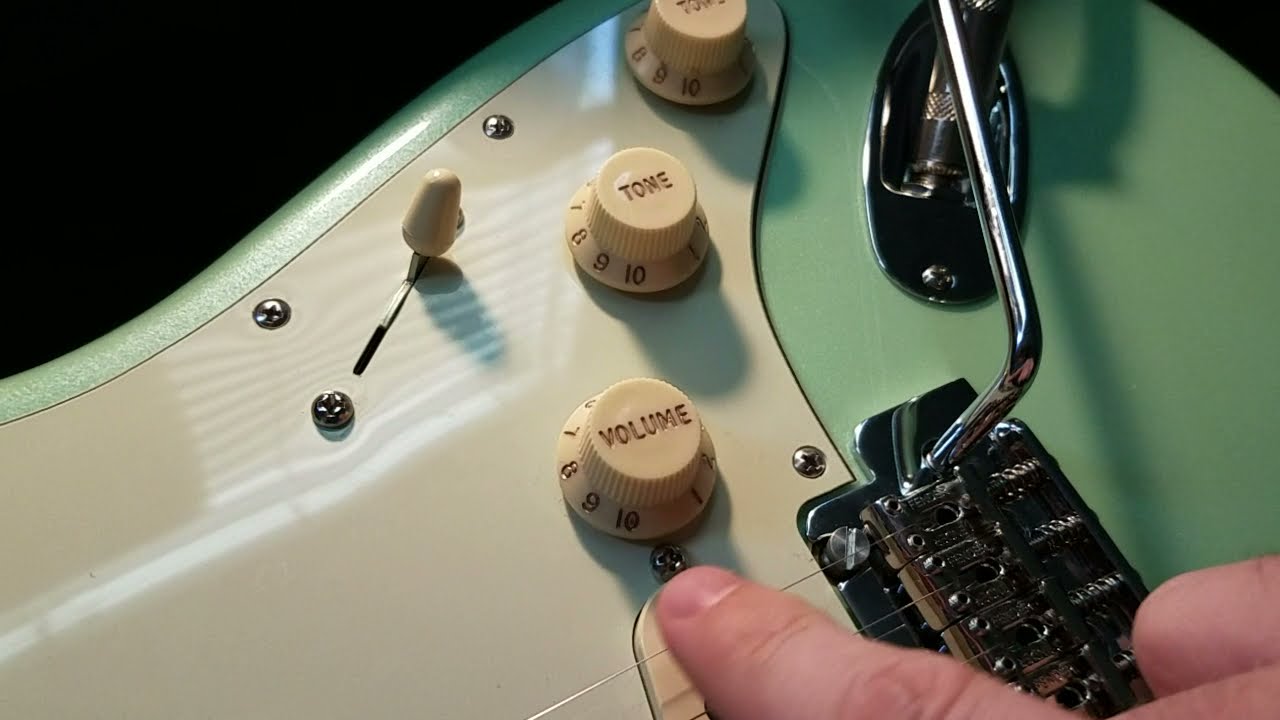Introduction
Welcome to the exciting world of acoustic guitar effects pedals! Whether you are a seasoned musician or just starting your musical journey, incorporating effects pedals can add depth, texture, and a whole new dimension to your acoustic guitar playing.
Effects pedals are electronic devices that alter the sound of your guitar. They allow you to create unique and captivating tones, turning a simple acoustic guitar into an expressive and versatile instrument. From lush reverbs to haunting delays, there is an effects pedal out there to suit every guitarist’s musical taste.
With such a wide variety of effects pedals available on the market, it can be overwhelming to determine which one is the best fit for your acoustic guitar. In this article, we will guide you through the process of choosing the perfect effects pedal for your acoustic guitar while considering various factors and highlighting some top recommendations.
Before we delve into the details, it is essential to note that the primary purpose of effects pedals for acoustic guitar is to enhance your playing, not mask it. These pedals are meant to complement your natural sound and bring out the best in your playing style.
So, whether you’re looking to add a touch of reverb to create a spacious atmosphere or want to experiment with rhythmic delays, this article will provide you with the necessary insights to make an informed decision and take your acoustic guitar playing to new heights.
Understanding Effects Pedals for Acoustic Guitar
Before delving into the world of effects pedals for acoustic guitar, it’s important to have a basic understanding of how they work and how they can enhance your playing.
Effects pedals are designed to modify the sound of your acoustic guitar by adding various effects such as reverb, delay, chorus, compression, and equalization. These effects can dramatically transform the tone, giving you the ability to create a wide range of sounds and atmospheres.
Reverb pedals add depth and ambience to your sound, simulating the natural reverberation of different environments. This effect is especially useful for creating spacious and immersive tones, adding a sense of depth to your sound. Whether you’re aiming for a subtle, room-like ambience or a grand, cathedral-like reverberation, a reverb pedal can help you achieve the desired effect.
Delay pedals, as the name suggests, create a delayed repetition of your guitar signal. This effect can be used to add rhythmic patterns, create spacious echoes, or even simulate multiple guitar parts. With control over parameters like delay time and feedback, you can customize the desired delay effect to match your musical style.
Chorus pedals add richness and warmth to your sound by combining multiple guitar signals and modulating them slightly. This effect is commonly used to create a shimmering, chorus-like sound that can add depth and thickness to your playing. By adjusting the rate and depth of modulation, you can create subtle, lush choruses or more pronounced and dramatic effects.
Compressor pedals help to even out the dynamic range of your guitar signal. They work by reducing the volume of loud notes and boosting quieter ones, resulting in a more balanced and controlled sound. This effect is particularly beneficial for fingerstyle playing or when you want to achieve a consistent volume level across different playing styles.
EQ pedals allow you to shape the tone of your acoustic guitar by adjusting specific frequency ranges. They provide control over bass, midrange, and treble frequencies, helping you sculpt your sound to cut through the mix or achieve a desired tonal balance.
Understanding the different types of effects pedals and their capabilities is crucial when choosing the right pedal for your acoustic guitar. By considering factors such as the type of music you play, your playing style, and the specific effects you want to incorporate, you can make an informed decision that will enhance your musical expression.
Factors to Consider Before Choosing an Effects Pedal
Choosing the right effects pedal for your acoustic guitar can be a daunting task, given the numerous options available. To help you make a confident decision, here are some important factors to consider before making your purchase:
- Playing Style: Consider your playing style and the type of music you typically play. Different effects pedals are better suited for specific genres or playing techniques. For example, if you primarily play fingerstyle, a compressor pedal can help even out the dynamics, while a delay pedal can enhance intricate melodies.
- Budget: Determine your budget for an effects pedal. Prices can vary greatly depending on the brand, features, and quality. Set a realistic budget and explore options within that range. Remember, expensive doesn’t always mean better, so it’s essential to find a balance between quality and affordability.
- Quality and Durability: Look for pedals that are built to last. Check customer reviews and feedback to assess the durability and reliability of a specific pedal. Investing in a high-quality pedal will ensure longevity and save you money in the long run.
- Versatility: Consider how versatile the effects pedal is. Some pedals offer a wide range of adjustable parameters, allowing you to achieve various sounds and effects. Versatility can be advantageous if you enjoy experimenting with different tones and styles.
- User-Friendliness: Evaluate the ease of use and user interface of the pedal. Look for intuitive controls and clear labeling, as this will make it easier for you to tweak settings and achieve the desired sound. A complex or confusing pedal may hinder your creativity and limit your ability to fully utilize its potential.
- Compatibility: Ensure compatibility between the effects pedal and your acoustic guitar setup. Check if the pedal requires specific power sources, such as batteries or AC adapters, and if it can work with your existing guitar amplifiers or audio interfaces.
- Effect Priority: Determine which effect(s) are most important to you. If you’re primarily looking for a specific effect, such as reverb or delay, prioritize pedals that excel in that particular effect. However, if you’re seeking a well-rounded pedal, consider options that offer multiple effects in one unit.
- Personal Preference: Trust your ears and personal preference. Every guitarist has their unique taste and sonic vision. Listen to demos, try different pedals if possible, and choose the one that resonates with you the most, both sonically and visually.
Considering these factors will help you narrow down your options and find the effects pedal that suits your needs and enhances your acoustic guitar playing. Take your time, do your research, and make an informed decision that will elevate your musical expression.
Top 5 Effects Pedals for Acoustic Guitar
Now that you have a better understanding of effects pedals and have considered the factors to keep in mind, let’s explore some top recommendations for effects pedals specifically designed for acoustic guitar players:
- Reverb Pedal: A staple for acoustic guitarists, a reverb pedal adds depth and ambiance to your sound. The Strymon BigSky and TC Electronic Hall of Fame Reverb are popular choices, offering a wide range of customizable reverbs that can recreate anything from small rooms to lush hall-like spaces.
- Delay Pedal: A delay pedal creates rhythmic repeats of your guitar signal, adding a sense of space and texture. The Boss DD-7 Digital Delay and MXR Carbon Copy Delay are highly regarded for their warm and natural delay tones, making them perfect for creating captivating and ethereal sounds.
- Chorus Pedal: Adding a chorus effect to your acoustic guitar can produce a shimmering and modulated sound. The TC Electronic Corona Chorus and MXR M234 Analog Chorus offer rich and lush chorusing, allowing you to create subtle or pronounced chorus effects with ease.
- Compressor Pedal: Compressor pedals even out the dynamic range of your guitar signal, resulting in a more controlled sound. The Keeley Compressor Plus and Xotic Effects SP Compressor are highly regarded for their transparent compression and ability to enhance sustain while preserving the natural tone of your acoustic guitar.
- EQ Pedal: An EQ pedal gives you control over specific frequency ranges, allowing you to shape your tone to suit your preference. The Fishman Platinum Pro EQ and MXR M108 Ten Band EQ are popular choices, providing precise control over bass, midrange, and treble frequencies to achieve a personalized and balanced tone.
These pedals represent a range of effects that are commonly used by acoustic guitarists. Remember, the “best” effects pedal ultimately depends on your personal preference and the specific sound you’re aiming to achieve. Don’t be afraid to experiment and explore different options to find the pedal that enhances your playing style the most.
Regardless of which effects pedals you choose, it’s important to familiarize yourself with the pedal’s settings and experiment with different combinations to fully unlock their potential. This will allow you to create unique and captivating sounds that showcase your musical expression and elevate your acoustic guitar playing.
Reverb Pedal
One of the essential effects pedals for acoustic guitarists is the reverb pedal. Reverb adds depth and spaciousness to your sound by simulating the natural reverberation of different acoustic environments. It can transform a dry and flat tone into a lush and immersive sonic experience.
A highly recommended reverb pedal for acoustic guitar is the Strymon BigSky. Known for its exceptional sound quality and versatility, the BigSky offers a wide range of customizable reverb algorithms. From subtle room ambience to grand hall-like reverbs, it covers all the fundamental reverb types that acoustic guitarists seek.
Another popular option is the TC Electronic Hall of Fame Reverb. It provides a rich selection of reverbs, including plate, spring, hall, and more. With TonePrint technology, you can even customize and download additional reverb sounds created by famous guitarists. This pedal offers great value for the price.
When using a reverb pedal for acoustic guitar, it’s important to consider the decay time and pre-delay settings. Decay time controls how long the reverberation lasts, while pre-delay determines the time between your initial note and the onset of the reverb effect. Adjusting these parameters allows you to create a sense of space and tailor the reverb to suit your playing style.
Whether you’re aiming for a subtle and natural room-like ambience or a lush and ethereal soundscape, a reverb pedal is an essential tool for acoustic guitarists. It adds depth and character to your playing, making your sound more engaging and captivating.
Experimenting with different reverb types and settings can help you discover the perfect atmospheric sound that complements your acoustic guitar. Remember to listen carefully and trust your ears when adjusting the reverb parameters to achieve the desired effect.
Overall, a quality reverb pedal can take your acoustic guitar playing to new heights by creating immersive and enchanting sonic experiences. It is an indispensable tool for adding depth, spaciousness, and a touch of magic to your music.
Delay Pedal
A delay pedal is another must-have effects pedal for acoustic guitarists. Delay creates rhythmic repeats of your guitar signal, adding depth, texture, and a sense of space to your playing. It can be used to create ambient soundscapes, add emphasis to certain passages, or even simulate multiple guitar parts.
A popular choice among guitarists is the Boss DD-7 Digital Delay pedal. Renowned for its reliability and exceptional sound quality, the DD-7 offers a wide range of delay options, including analog, tape, and digital simulations. It also features a versatile Loop function, allowing you to layer multiple parts and experiment with creative looping techniques.
For those seeking a warm and organic analog sound, the MXR Carbon Copy Delay pedal is highly recommended. It provides rich, vintage-style delays with a dark and lush character that perfectly complements acoustic guitar tones. With controls for delay time, mix, and regeneration, you have precise control over your desired delay effect.
When using a delay pedal, you have the freedom to adjust the delay time to determine the rhythmic pattern and the number of repeats. You can create anything from short delay slaps to long and mesmerizing echoes. Experiment with different delay settings to find the right balance that enhances your playing style.
Furthermore, combining delay with other effects pedals like reverb or modulation can yield even more captivating sounds. The combination of delay and reverb, for example, can create a beautiful and expansive sound that immerses the listener in a dreamy sonic landscape.
Like any effects pedal, it’s important to experiment and find the delay pedal that best suits your musical taste. Each pedal offers its unique sonic characteristics that can inspire and transform your acoustic guitar playing.
Whether you’re looking to add subtle rhythmic echoes or create complex and layered arrangements, a delay pedal opens up a world of creative possibilities for acoustic guitarists. It adds depth, texture, and a touch of magic, allowing you to create captivating and memorable musical moments.
Take the time to explore different delay pedals, experiment with different settings, and let your imagination run wild. Embrace the rhythmic possibilities and let your acoustic guitar shine with the mesmerizing sound of a delay pedal.
Chorus Pedal
Adding a chorus pedal to your acoustic guitar rig can bring a new dimension to your sound. Chorus creates a shimmering and modulated effect by combining multiple guitar signals, giving your guitar a rich and textured quality. It can add depth, warmth, and a touch of ethereal beauty to your playing.
A highly recommended chorus pedal for acoustic guitar is the TC Electronic Corona Chorus. This pedal offers a wide range of chorus tones, from subtle and transparent modulation to more pronounced and lush effects. With controls for speed, depth, and tone, you can dial in the perfect chorus sound that complements your acoustic guitar’s natural tone.
Another popular option is the MXR M234 Analog Chorus pedal. Known for its warm and vintage-style modulation, the M234 delivers a classic chorus sound that works especially well with acoustic guitars. Its simplicity and straightforward controls make it easy to dial in the desired chorus effect without getting overwhelmed.
When using a chorus pedal, it’s important to find the right balance between the speed and depth controls. Adjusting the speed alters the rate at which the modulation occurs, while the depth control determines the intensity of the effect. Experimenting with these settings will help you find the sweet spot that adds just the right amount of chorus to your acoustic guitar sound.
Chorus can be a versatile tool in your musical arsenal, allowing you to add color and character to your playing. It works particularly well with arpeggios, fingerpicked melodies, and strummed chords. By incorporating a chorus pedal into your acoustic guitar setup, you can create captivating sounds that capture the listener’s attention.
In addition to standalone chorus pedals, some multi-effects pedals offer chorus effects along with various other guitar effects. These all-in-one pedals can be a cost-effective and space-saving solution for acoustic guitarists looking to explore a variety of effects including chorus.
Remember, the key to using a chorus pedal effectively is to let it enhance your playing without overpowering it. Find the chorus sound that complements the natural tone of your acoustic guitar and adds depth and richness without overwhelming the overall sound.
Overall, a chorus pedal can be a valuable addition to your acoustic guitar rig, providing a beautiful and versatile modulation effect. Experiment with different chorus pedals, explore various settings, and let your acoustic guitar soar with the captivating sound of a chorus pedal.
Compressor Pedal
A compressor pedal is a valuable tool for acoustic guitarists looking to enhance their playing dynamics and achieve a more balanced sound. It is designed to even out the volume levels of your guitar signal, resulting in a more consistent and controlled sound.
One highly regarded compressor pedal for acoustic guitar is the Keeley Compressor Plus. Known for its transparency and versatility, this pedal preserves the natural tone of your acoustic guitar while providing smooth and transparent compression. It allows you to control the sustain and attack of your notes, making it ideal for fingerstyle playing or achieving a consistent volume level across different playing styles.
Another popular option is the Xotic Effects SP Compressor. This pedal offers studio-quality compression in a compact and user-friendly design. It features a blend knob that allows you to blend your compressed signal with the uncompressed signal, providing natural dynamics while still benefiting from the subtle compression effect.
When using a compressor pedal, it’s important to understand its various parameters. The threshold control determines the level at which the compression starts to take effect. The ratio control determines the degree of compression applied once the signal exceeds the threshold. Attack and release controls determine how quickly the compressor reacts to changes in volume.
Experimenting with these settings will help you find the right balance of compression for your acoustic guitar. On one hand, too much compression can squash your dynamics and make your playing sound unnatural. On the other hand, too little compression may not effectively even out the volume levels and control the overall sound.
A compressor pedal can be especially beneficial for solo acoustic guitarists, as it helps to bring out the nuances in your playing and make your performance more expressive. It can also be invaluable in a live setting, ensuring that your acoustic guitar’s volume stays consistent throughout your performance.
However, it’s important to note that every guitarist’s preference for compression varies. Some may prefer a subtle and transparent compression, while others may prefer a more pronounced effect. It’s essential to experiment with different settings and find the compression that best suits your playing style and musical preferences.
Ultimately, a compressor pedal can be a valuable addition to your acoustic guitar setup, improving the overall sound and dynamics of your playing. It allows you to achieve a balanced and controlled sound, making your acoustic guitar performance more polished and professional.
EQ Pedal
An EQ (Equalizer) pedal is a powerful tool for shaping the tone of your acoustic guitar. It allows you to adjust specific frequency ranges, giving you control over the bass, midrange, and treble frequencies to achieve a personalized and balanced sound.
The Fishman Platinum Pro EQ is a highly recommended EQ pedal for acoustic guitarists. It offers a wide range of tone-shaping options with its four-band equalizer, allowing you to fine-tune your guitar’s frequency response. Additionally, it features a built-in chromatic tuner and feedback-fighting controls, making it an all-in-one solution for acoustic guitar tone management.
Another popular option is the MXR M108 Ten Band EQ pedal. This pedal provides precise control over your guitar’s frequency spectrum with its ten adjustable sliders. It allows you to boost or cut specific frequencies to sculpt your sound and adapt to different playing environments. With its sturdy build and reliable performance, the MXR M108 is a favorite among many acoustic guitarists.
When using an EQ pedal, it’s important to have a basic understanding of the frequency range of your acoustic guitar and how each band affects the sound. Adjusting the bass frequencies can add warmth and richness, while adjusting the midrange can bring out the clarity and definition of your playing. The treble frequencies can help to add brightness and sparkle.
An EQ pedal can be particularly useful when playing in different venues or with different amplification systems. It allows you to compensate for changing room acoustics or fine-tune your sound to cut through the mix. By tailoring your guitar’s tone to your preferences, you can achieve a more satisfying sound and optimize your playing experience.
It’s important to note that an EQ pedal should be used strategically and in moderation, rather than as a crutch to compensate for poor technique or inferior equipment. It is meant to refine and enhance your acoustic guitar sound, not to completely overhaul it. Use it to complement your guitar’s natural tone and bring out the best in your playing.
Experimenting with different EQ settings is key to finding the perfect balance that suits your acoustic guitar and musical style. Learn how different frequency adjustments affect your sound, and let your ears guide you to the tone that pleases you the most.
Overall, an EQ pedal is a powerful tool for acoustic guitarists, allowing you to shape your tone and achieve a more personalized sound. It gives you control over the frequency spectrum, enhancing the richness, and balance of your playing. With an EQ pedal, you can tailor your acoustic guitar sound to suit your individual preferences and musical vision.
Conclusion
Choosing the right effects pedals for your acoustic guitar can greatly enhance your playing and unleash a world of sonic possibilities. Understanding the different types of pedals and considering factors such as your playing style, budget, and personal preference will guide you towards the perfect pedal choices for your needs.
Reverb pedals add depth and ambience, while delay pedals offer rhythmic repeats and spacious echoes. Chorus pedals provide shimmering and modulated tones, and compressor pedals even out the volume levels for a controlled sound. EQ pedals allow you to shape your tone and achieve a balanced frequency response.
Remember, the “best” effects pedal for your acoustic guitar ultimately depends on your own musical taste and the specific sound you’re aiming to achieve. Trust your ears, experiment with different settings, and let your creativity guide you as you explore the captivating sounds these pedals can produce.
Investing in high-quality and durable pedals will ensure longevity and optimal performance throughout your musical journey. Look for user-friendly designs and consider compatibility with your existing setup to make the integration seamless and hassle-free.
Lastly, embrace the process of discovering and refining your sound. Don’t be afraid to explore new sounds, experiment with different combinations of effects, and let your acoustic guitar be the canvas for your artistic expression. With the right effects pedals, you can elevate your playing to new heights, captivate listeners, and truly make your music stand out.
So, go ahead and embark on your journey to find the perfect effects pedals for your acoustic guitar. Explore the possibilities, unleash your creativity, and enjoy the transformative power these pedals bring to your music. Let the effects pedals become your sonic companions, enhancing your acoustic guitar playing and captivating audiences with your unique and distinctive sound.







